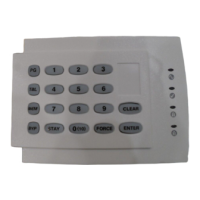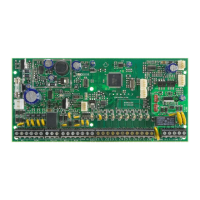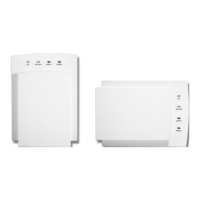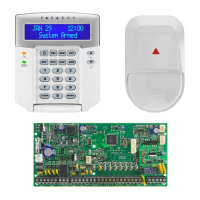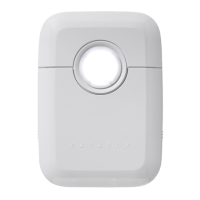Do you have a question about the Paradox SP6000 and is the answer not in the manual?
| Partitions | 2 |
|---|---|
| User Codes | 32 |
| Event Buffer | 256 events |
| PGM Outputs | 2 (expandable to 16) |
| Compatibility | Compatible with wireless expansion modules and keypads |
| Communication | Phone line, GSM, IP |
| Users | 32 |
| Zones | Up to 32 (5 on-board) |
| Keypads | Supports multiple keypad types |
Steps to program, modify, or delete user access codes and settings.
Configure entry/exit delays and bell cut-off times for system operation.
How to set the current time and date on the security system.
Setting up the communicator and performing test reports.
Configuration of auto-arming, system options, and remote control management.
Procedure for erasing lost or stolen remote controls from the system.
Understanding beep tones and keypad indicator lights for system feedback.
Explanations of MG10LEDV, MG32LED, and MG32LRF keypad modules.
Details on system master code and partition-specific master codes.
Guide to programming new and deleting existing user access codes.
Instructions for activating, deactivating, and changing arming levels within StayD mode.
Advanced features like window mode and live view for StayD mode.
Procedures for Regular, Sleep, and Stay arming the security system.
Using one-touch shortcuts and automatic timing for system arming.
Steps to temporarily deactivate specific zones before arming the system.
Using the recall feature to restore previously saved bypass settings.
System display modes, alarm display, and memory functions.
Information on fire alarms, safety tips, and panic alarm functions.
Settings for chime zones, keypad muting, and backlight adjustment.
Explanation of PGM key functions for programmable outputs.
How to access and interpret system trouble conditions displayed on the keypad.
Explanation of the power save mode for wireless keypad modules.
Instructions for using quick function keys for reporting and communication.
Guidelines for testing system components and recommended maintenance.
Details on zone descriptions, partitioning, and panic alarm configurations.
Information on system timers, PGMs, and other configuration details.
Details on product warranty, limitations of alarm systems, and VoIP warnings.
Important safety warnings, FCC compliance, and legal disclaimers.



